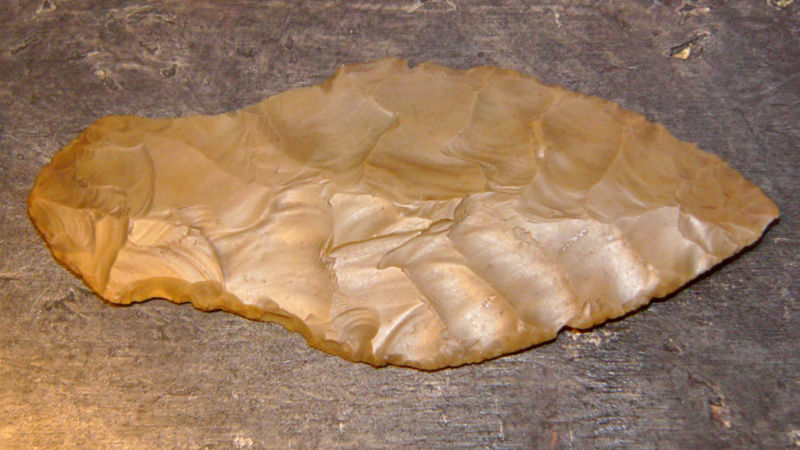Hunting and killing animals was an essential part of survival for stone age people, and now 21st century science has discovered that in order to make lethal weapons, stone age people had to be able to multitask.
 One weapon of choice in the Middle Stone Age, between 300 and 50 thousand years ago, was a sharpened stone glued on to a wooden handle. It's been known for a while that stone age man made glues from tree resin. Now a study published in the journal PNAS by a team of scientists from the University of the Witwatersrand in South Africa has revealed that it was not simply a case of daubing a stick in tree resin and pushing a stone into it. Lyn Wadley and her colleagues think that skilled Stone Age craftsman created high-performance weaponry using complex adhesives. And that required an understanding of various aspects of chemistry and even pyrotechnics.
One weapon of choice in the Middle Stone Age, between 300 and 50 thousand years ago, was a sharpened stone glued on to a wooden handle. It's been known for a while that stone age man made glues from tree resin. Now a study published in the journal PNAS by a team of scientists from the University of the Witwatersrand in South Africa has revealed that it was not simply a case of daubing a stick in tree resin and pushing a stone into it. Lyn Wadley and her colleagues think that skilled Stone Age craftsman created high-performance weaponry using complex adhesives. And that required an understanding of various aspects of chemistry and even pyrotechnics.
We know that in South Africa, people in the Middle Stone Age made glues out of a mixture of tree resin and various other ingredients including beeswax and red ochre pigments, but until now it's not been clear whether the red colour was added for ceremony, or whether it had a role in making the glue work better.
To try and get to the bottom of ancient glues, Wadley and the team set about making their own Stone Age weapons using a range of natural ingredients and employing construction methods that would have been available to Middle Stone Age people, including an open fire to help dry out and set the glues. They made a range of glues using different combinations of ingredients and then analysed their composition and tested out their properties using 21st century technologies. So for example they used X-ray Fluorescence spectrometry to analyse the chemical composition and measured pH, particle size, hardness and so on. The team also took a more Stone Age approach to testing out the weapons: they chopped away at a tree branch for 5 minutes to see if the glue held.
They discovered that there was no single recipe for making the best glue and that various factors influenced the outcome, including the precise ingredients used - many of them vary naturally - as well as the technique used, for example by sitting the glue near a fire to dry it out: if it gets too close the glue can boil and lose cohesion, or it may trap air bubbles and become weaker.
All this got the research team thinking that Stone Age glue makers would have needed a high level of mental flexibility to continually assess how the glue was turning out during the manufacturing process: they could multitask. They also needed the ability to have abstract thoughts to gauge the different properties of the gums, from sticky, to wet and gloopy, and they also needed to think carefully about the position of the stone blade on the handle.










Comments
Add a comment